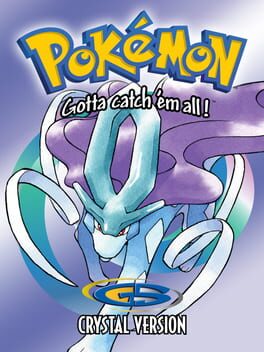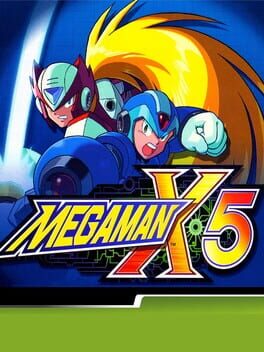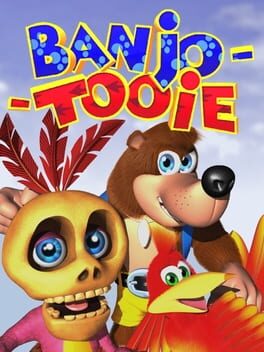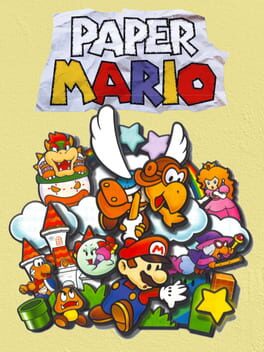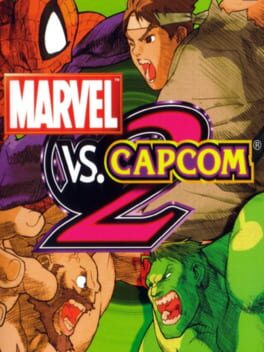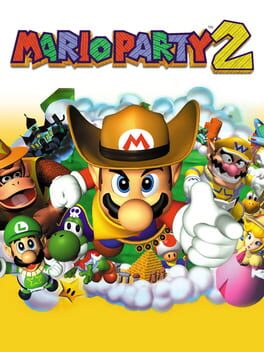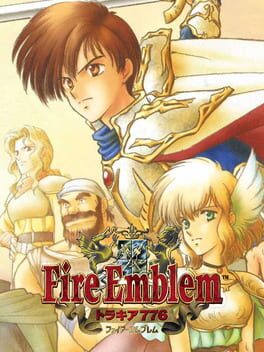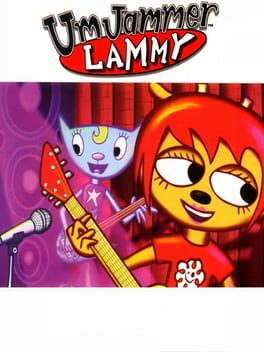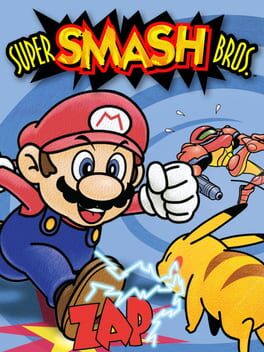tuskoub
If I could rate a game off of vibes and soul alone, this would easily be a 5 star rating. Johto is a genuinely nice setting with a lot of history, culture, and memorable music and setpieces.
Sadly, that doesn't extend to the roster of new Pokemon as much, the story, or the general game design. I agree and echo most of the grievances levied against Johto's level curve. It's never fun to have to stop your tracks after Goldenrod City to a screeching halt for an intensely long grinding session. The Team Rocket plotline is very empty and nothing. I think I like the postgame more than most people but it is still very frustrating to have so many Kanto Pokemon in Johto and lock some of the cool new ones like Murkrow and Houndour behind low level postgame options.
I have slight nostalgia for this but, it's easily the weakest of the Pokémon regions in terms of game design. I do have to give Johto a special shoutout for spawning my single favorite Pokémon of all time, the Wooper family.
Team Used:
Typhlosion, "Surtr" (Fire)
Quagsire, "Axol" (Water/Ground)
Crobat, "Alucard" (Poison/Flying)
Jynx, "Valhalla" (Ice/Psychic)
Heracross, "Achilles" (Bug/Fighting)
Miltank, "Cremia" (Normal)
Sadly, that doesn't extend to the roster of new Pokemon as much, the story, or the general game design. I agree and echo most of the grievances levied against Johto's level curve. It's never fun to have to stop your tracks after Goldenrod City to a screeching halt for an intensely long grinding session. The Team Rocket plotline is very empty and nothing. I think I like the postgame more than most people but it is still very frustrating to have so many Kanto Pokemon in Johto and lock some of the cool new ones like Murkrow and Houndour behind low level postgame options.
I have slight nostalgia for this but, it's easily the weakest of the Pokémon regions in terms of game design. I do have to give Johto a special shoutout for spawning my single favorite Pokémon of all time, the Wooper family.
Team Used:
Typhlosion, "Surtr" (Fire)
Quagsire, "Axol" (Water/Ground)
Crobat, "Alucard" (Poison/Flying)
Jynx, "Valhalla" (Ice/Psychic)
Heracross, "Achilles" (Bug/Fighting)
Miltank, "Cremia" (Normal)
2000
It's fine. The story is kinda just there, had potential to be more interesting but it ends up being Sigma at the helm again and the doomsday plot isn't as engaging thanks to the RNG of it all. I didn't engage with the armor system much at all. The stages in general are just okay, nothing standout, except Mattrex's stage looking and playing kinda cool, but nothing too bad (Except the bike sections like on Squid Adler's stage being unfun).
The game at least looks very pretty thanks to using the same style as Mega Man X4. I will always fawn over detailed 32-bit sprites like these. I just walked away from it after my first playthrough around 2020 not remembering much or having much of an impression either way of it being bad or great, just "That was fine."
The game at least looks very pretty thanks to using the same style as Mega Man X4. I will always fawn over detailed 32-bit sprites like these. I just walked away from it after my first playthrough around 2020 not remembering much or having much of an impression either way of it being bad or great, just "That was fine."
2000
I have complicated feelings about Banjo-Tooie. It's a game that I love and have 100%ed in spite of some sharp sticking points I have. Quantifying my feelings with a number doesn't exactly do it justice since I do truly enjoy it more than a 3.5/5 would indicate. I really like this game for its ambition, but I think there are some things that hold it back. In the strictest sense, a sequel that looks better, has more content, and expands upon the gameplay mechanics of the original would seem like an easy upgrade from it but sometimes bigger isn't always better.
I enjoy the music, the dialogue, the levels, and all the new moves and skills you can pull off with Banjo and Kazooie. The OST might be even better than the first and the character writing is top notch here, even over Banjo-Kazooie. Split-up is a perfect evolution for the series and I enjoy the puzzles around it and how you're eased into the mechanic starting with Witchyworld. The setpieces are nice, the transformations are much more fun and useful than the first game, and there's a lot more to collect.
However, while it makes for some cool moments, the interconnected world design feels a bit at odds with a 3D Platformer like this and, ironically, makes parts feel disjointed. It ends up feeling more like padding or bloat than a true sense of one large world.
My final grievance that I am shocked doesn't crop up more often is the INTENSE reliance on first person sections and aiming. Doing these on the N64 controller with its oblong notches, rickety analog stick, and uncomfortable plastic is a nightmare, especially with how the game expects pinpoint precision for the objectives that need it. Worst of all, is that the reticle snaps back to center when aiming, a truly baffling design decision that makes the control a practice in patience. I really wish I could ignore these sections but they're so incredibly prevalent that it knocks down my personal scoring for the game more than I wish it did.
In spite of that, I would recommend this game if you're a fan of large 3D Platformers. It doesn't have the same restraint and tight design of the first, and I can respect the ambition for this game. I only wish everything was integrated more smoothly and that, hopefully someday, we'll get a sequel that deftly implements all the wonderful ideas from this entry.
I've definitely not replayed it over and over as much as I have with the first game but I can easily see myself liking Banjo-Tooie more upon a "gut-check of my feelings" replay of the game sometime.
I enjoy the music, the dialogue, the levels, and all the new moves and skills you can pull off with Banjo and Kazooie. The OST might be even better than the first and the character writing is top notch here, even over Banjo-Kazooie. Split-up is a perfect evolution for the series and I enjoy the puzzles around it and how you're eased into the mechanic starting with Witchyworld. The setpieces are nice, the transformations are much more fun and useful than the first game, and there's a lot more to collect.
However, while it makes for some cool moments, the interconnected world design feels a bit at odds with a 3D Platformer like this and, ironically, makes parts feel disjointed. It ends up feeling more like padding or bloat than a true sense of one large world.
My final grievance that I am shocked doesn't crop up more often is the INTENSE reliance on first person sections and aiming. Doing these on the N64 controller with its oblong notches, rickety analog stick, and uncomfortable plastic is a nightmare, especially with how the game expects pinpoint precision for the objectives that need it. Worst of all, is that the reticle snaps back to center when aiming, a truly baffling design decision that makes the control a practice in patience. I really wish I could ignore these sections but they're so incredibly prevalent that it knocks down my personal scoring for the game more than I wish it did.
In spite of that, I would recommend this game if you're a fan of large 3D Platformers. It doesn't have the same restraint and tight design of the first, and I can respect the ambition for this game. I only wish everything was integrated more smoothly and that, hopefully someday, we'll get a sequel that deftly implements all the wonderful ideas from this entry.
I've definitely not replayed it over and over as much as I have with the first game but I can easily see myself liking Banjo-Tooie more upon a "gut-check of my feelings" replay of the game sometime.
2000
A very solid game! I regularly change my mind back and forth whether I think this one or its successor is the best Paper Mario game. For starters, this is easily the best and most compelling version of the standard "Bowser kidnaps Peach" plotline in the whole Mario franchise. Stakes are high, Bowser is an active threat and uses his power against the world, there's a solid plan, and you see the conflict from every perspective, including Peach's. The characters, especially the partners, are all charming, special shoutouts to Lady Bow. The gameplay is exactly as solid as its spiritual predecessor, Super Mario RPG, and the badge system makes character progression in this game so very engaging and customizable. There's a strong reason why even people who don't normally enjoy RPGs love this game. It's THAT good.
All-time classic. It's absolutely stunning that such an amazing game was born out of the development conditions it came from, being an asset-flip with a mere year of dev time.
Majora's Mask is very somber. I ADORE the dreariness that is positively seeping out of this game from every aspect, be it the music, graphics, or story. Everything is more off-kilter and darker from your usual Zelda adventure.
The Groundhog Day type of set-up is a brilliant mechanic. The player must repeat the same "Final 3 days of the world before Doomsday" over and over until they can collect everything they need to stop it. This allows for a very focused experience in a smaller setting, one town. You come to learn so much about the place, its inhabitants, their lives, struggles, dreams, hopes, and fears. It makes for such compelling quests and interactions to learn deeply about this small cross-section of a doomed world.
The masks all allow for varied and fun gameplay giving you different forms of traversal, attack, and the puzzles make extensive use of all of your different forms.
I 100% this game every time I play it since it just feels right to get the most out of it. An absolute must-play.
Majora's Mask is very somber. I ADORE the dreariness that is positively seeping out of this game from every aspect, be it the music, graphics, or story. Everything is more off-kilter and darker from your usual Zelda adventure.
The Groundhog Day type of set-up is a brilliant mechanic. The player must repeat the same "Final 3 days of the world before Doomsday" over and over until they can collect everything they need to stop it. This allows for a very focused experience in a smaller setting, one town. You come to learn so much about the place, its inhabitants, their lives, struggles, dreams, hopes, and fears. It makes for such compelling quests and interactions to learn deeply about this small cross-section of a doomed world.
The masks all allow for varied and fun gameplay giving you different forms of traversal, attack, and the puzzles make extensive use of all of your different forms.
I 100% this game every time I play it since it just feels right to get the most out of it. An absolute must-play.
(SPOILER FREE, LONG REVIEW WARNING)
Berwick Saga is nothing short of a masterpiece. It's absolutely among the toughest video games I've ever completed and there are some nitpicks I have but, I have thoroughly enjoyed my time in Lazberia. This is the pinnacle and culmination of Shouzou Kaga’s history of games up to this point, feeling like all the best aspects from Fire Emblem Genealogy of the Holy War’s scale and scope, Fire Emblem Thracia 776’s mechanical richness, and Tear Ring Saga’s writing
My favorite thing about this game is how mechanically rich it is, how everything weaves together and plays off itself. This is the closest to Fire Emblem Thracia 776 that I've felt that deep sense of management and tactics since my first completion of that game, my favorite video game of all time. The money you have, every microcosmic choice you make to spend it on a mercenary, on food, on horses, on items, or anything reverberates through the whole performance of your army. Your funds are limited, and you have to earn a lot of your money. In no other game have I felt as great of a feeling of getting a gift as whenever Reese would get money in this game, as we also learn directly where it comes from. The battle's more active flow and all challenges that come with it are very tactically engaging, working the noggin harder than ever with an SRPG.
That's Berwick Saga's other strength, the depth of its world and characters. While there is much to Lazberia that we don't learn, we learn everything about the characters in our contingent, the city of Navaron, and those connected to them. It's everything I love about The Legend of Zelda Majora's Mask and Moon: RPG Remix Adventure in which a smaller setting is expanded upon greatly to breathe life into this digital world the player experiences. I'm genuinely going to miss the NPCs in this game, and I'm happy to have experienced all the arcs that almost EVERY character in this game endures.
Not only is every character a joy to read and watch as they ALL have their own sidequests, backstories, and development to enjoy, but they also come with stark gameplay differences that make each unit unique and worth using (Except Derrick and Perceval). I was ALWAYS strapped trying to pick who to deploy not because I struggled who to include, but because I struggled who to leave behind at the barracks, a mark of good unit design. Each unit is made so unique and has a niche all to their own. It sounds ludicrous but you could deploy a unit in this game to do ONE thing in a whole chapter and it still somehow feels like their deployment was worthwhile.
Ultimately, I'm happy with the way the story ended in retrospect but there is a large part of the game where it feels like you're waiting for the main plot to occur. It's all in service of the main themes of the game, however I wish they started and paced certain threads earlier (Like the Chosen One and everything in Raze). The strongest points come in the theming about this game. The conflict centers around a 500-year long war who barely anyone living can remember why it started, just that the hatred for their enemies is so ingrained. I love these types of tales and especially the thesis of Berwick Saga. That thesis being that problems won’t go away on their own, change doesn’t just happen because. These things take real concerted effort from people with strong wills and character to undo the wrongs of the past and no miracle will sprout out of anywhere to save you. If you want to see change, be the change. (I am a MAJOR fan of the twists and turns this game’s plot takes even if it takes a while to get there)
While I was down with the difficulty for a good amount of the game, it started to get a bit too overbearing in the latter third, with Ballistae and Dark Magic spammed everywhere with very few, centralizing options (Provoke/Shield and Owen) to mitigate their presence. Still, many of the maps are beautifully designed and stand as some of the best SRPG maps I've ever played. They are multi-layered with many engaging objectives, gameplay-story synergy, and smart enemy placement/design. Chapter 3-M, 5-M, 11-M, and 12-1 stand out in this regard to me with some intense story beats packed with them.
The RNG in this game is incredibly unfair, everything people attribute to Fire Emblem The Binding Blade is much more egregious here and rates are low across the board. The game's most unnecessary mechanic also suffers from this, being the RNG Weapon Durability, which is the most antithetical mechanic to this game's tactical gameplay and becomes blind luck. This area is the biggest drawback to Berwick Saga in my opinion. However, even this has some tactical merit as you can use food, skills, and certain weapons to ensure greater Hit and Avoid rates. While this is my only true scathing point and knock against the game, I believe that it can lead to some tactical decision-making and gameplay (with the exception of durability, that part is pure random chance).
In summary, Berwick Saga's world is rich and engaging. Its mechanics are deep and will have you wracking your brain more than ever with an SRPG. Its characters are fully fleshed and real, even down to the shop NPCs. This game is not for the light of heart, however. I'd consider myself to not just be good at games, but at SRPGs and this put me through the wringer big time. If you're up to such an immense challenge, however, you will find one of the brightest hidden gems around. Truly a once-in-a-lifetime game.
Berwick Saga is nothing short of a masterpiece. It's absolutely among the toughest video games I've ever completed and there are some nitpicks I have but, I have thoroughly enjoyed my time in Lazberia. This is the pinnacle and culmination of Shouzou Kaga’s history of games up to this point, feeling like all the best aspects from Fire Emblem Genealogy of the Holy War’s scale and scope, Fire Emblem Thracia 776’s mechanical richness, and Tear Ring Saga’s writing
My favorite thing about this game is how mechanically rich it is, how everything weaves together and plays off itself. This is the closest to Fire Emblem Thracia 776 that I've felt that deep sense of management and tactics since my first completion of that game, my favorite video game of all time. The money you have, every microcosmic choice you make to spend it on a mercenary, on food, on horses, on items, or anything reverberates through the whole performance of your army. Your funds are limited, and you have to earn a lot of your money. In no other game have I felt as great of a feeling of getting a gift as whenever Reese would get money in this game, as we also learn directly where it comes from. The battle's more active flow and all challenges that come with it are very tactically engaging, working the noggin harder than ever with an SRPG.
That's Berwick Saga's other strength, the depth of its world and characters. While there is much to Lazberia that we don't learn, we learn everything about the characters in our contingent, the city of Navaron, and those connected to them. It's everything I love about The Legend of Zelda Majora's Mask and Moon: RPG Remix Adventure in which a smaller setting is expanded upon greatly to breathe life into this digital world the player experiences. I'm genuinely going to miss the NPCs in this game, and I'm happy to have experienced all the arcs that almost EVERY character in this game endures.
Not only is every character a joy to read and watch as they ALL have their own sidequests, backstories, and development to enjoy, but they also come with stark gameplay differences that make each unit unique and worth using (Except Derrick and Perceval). I was ALWAYS strapped trying to pick who to deploy not because I struggled who to include, but because I struggled who to leave behind at the barracks, a mark of good unit design. Each unit is made so unique and has a niche all to their own. It sounds ludicrous but you could deploy a unit in this game to do ONE thing in a whole chapter and it still somehow feels like their deployment was worthwhile.
Ultimately, I'm happy with the way the story ended in retrospect but there is a large part of the game where it feels like you're waiting for the main plot to occur. It's all in service of the main themes of the game, however I wish they started and paced certain threads earlier (Like the Chosen One and everything in Raze). The strongest points come in the theming about this game. The conflict centers around a 500-year long war who barely anyone living can remember why it started, just that the hatred for their enemies is so ingrained. I love these types of tales and especially the thesis of Berwick Saga. That thesis being that problems won’t go away on their own, change doesn’t just happen because. These things take real concerted effort from people with strong wills and character to undo the wrongs of the past and no miracle will sprout out of anywhere to save you. If you want to see change, be the change. (I am a MAJOR fan of the twists and turns this game’s plot takes even if it takes a while to get there)
While I was down with the difficulty for a good amount of the game, it started to get a bit too overbearing in the latter third, with Ballistae and Dark Magic spammed everywhere with very few, centralizing options (Provoke/Shield and Owen) to mitigate their presence. Still, many of the maps are beautifully designed and stand as some of the best SRPG maps I've ever played. They are multi-layered with many engaging objectives, gameplay-story synergy, and smart enemy placement/design. Chapter 3-M, 5-M, 11-M, and 12-1 stand out in this regard to me with some intense story beats packed with them.
The RNG in this game is incredibly unfair, everything people attribute to Fire Emblem The Binding Blade is much more egregious here and rates are low across the board. The game's most unnecessary mechanic also suffers from this, being the RNG Weapon Durability, which is the most antithetical mechanic to this game's tactical gameplay and becomes blind luck. This area is the biggest drawback to Berwick Saga in my opinion. However, even this has some tactical merit as you can use food, skills, and certain weapons to ensure greater Hit and Avoid rates. While this is my only true scathing point and knock against the game, I believe that it can lead to some tactical decision-making and gameplay (with the exception of durability, that part is pure random chance).
In summary, Berwick Saga's world is rich and engaging. Its mechanics are deep and will have you wracking your brain more than ever with an SRPG. Its characters are fully fleshed and real, even down to the shop NPCs. This game is not for the light of heart, however. I'd consider myself to not just be good at games, but at SRPGs and this put me through the wringer big time. If you're up to such an immense challenge, however, you will find one of the brightest hidden gems around. Truly a once-in-a-lifetime game.
One of my favorite fighting games, an all-time classic. The smooth, detailed, hand-drawn 2D sprites and 3D backgrounds combine to give this game such a distinctive look that's full of life. The roster is large and varied with many fun movesets (My teams usually include some permutation of Venom, Doom, Sakura, and Ruby Heart.)
I've made many great memories playing this in arcades with friends, after tourneys, and on dates with my girlfriend (Her BB Hood is schnasty). If I'm given a choice to play a fighting game with friends, this is always my go-to if it's accessible. I'd love to have a copy someday or play through all the story modes but I still love it so much even with just arcades as my experience with it.
I've made many great memories playing this in arcades with friends, after tourneys, and on dates with my girlfriend (Her BB Hood is schnasty). If I'm given a choice to play a fighting game with friends, this is always my go-to if it's accessible. I'd love to have a copy someday or play through all the story modes but I still love it so much even with just arcades as my experience with it.
1999
When you've got 3 friends and this game. You're in for a very good time. No asterisks, no concessions, it's just a great time. This game makes many improvements off the first game with more balanced boards, better aesthetics and cool theming for each board, a better minigame selection, and classic music.
I can understand why some call this the best Mario Party game but I personally believe Mario Party 6 and Mario Party Superstars have it beat. This is still a great one and always has good vibes for multiplayer fun.
I can understand why some call this the best Mario Party game but I personally believe Mario Party 6 and Mario Party Superstars have it beat. This is still a great one and always has good vibes for multiplayer fun.
My favorite 2D fighting game. I remember being super into this game before its major modern scene sprouted up and rooting through hours-long unedited YouTube footage, some recorded off cameras from old tourneys, just to see gameplay and learn combos. This was right when I became a fan of the manga it's based on too, but I was interested even without that context. One fun memory comes from showing this game off to my friends in high school, and pulling off THE iconic Dio combo in front of them, causing everyone to get hyped.
This game is so stylish, the music is so varied and fitting for each wacky member of its roster, and the spritework & mechanics come from when Capcom was at the top of their game with 2D Spritework. This game has so so much sauce. I love playing as Hol Horse and Jotaro specifically. I love practicing and showing off combos in this game. It's so iconic and it's a great adaptation of the manga with lots of love and little nods in every frame of animation.
This game is so stylish, the music is so varied and fitting for each wacky member of its roster, and the spritework & mechanics come from when Capcom was at the top of their game with 2D Spritework. This game has so so much sauce. I love playing as Hol Horse and Jotaro specifically. I love practicing and showing off combos in this game. It's so iconic and it's a great adaptation of the manga with lots of love and little nods in every frame of animation.
Fire Emblem Thracia 776 is my absolute favorite video game of all time. I love this game so very dearly. Heads-up that this review will be very gushy and long. For a personal introduction, I first played this game as a freshman in High School when I ran into someone in the Library playing Fire Emblem Radiant Dawn. It was the first time I'd met someone else who liked FE and was ecstatic, since he was one of the first friends I made in a completely new school. Eventually, he showed me this game and I was so intrigued by all the different mechanics, story set up, and its relative obscurity. Just like I stated in my review of Fire Emblem Genealogy of the Holy War, I've made countless friends online through discussion and fandom over this very game and treasure the community experience with this game dearly.
Thracia 776 exemplifies the power of video games as an art form perfectly. Ludonarrative Harmony is when story and gameplay compliment each other to provide and immersive experience. That's the exact term I'd use to describe this game. Thracia marries tactical gameplay and the story of a personal war to invest the player emotionally in a way that no other medium can.
Most other Fire Emblem games feature a grand army of a few lordlings taking down legions of brigands, soldiers, and such to represent a whole largescale war in small scale skirmished. This entry actually represents a very ground-level, personal type of conflict perfectly fitting the story of a Prince estranged from his nation, in hiding, trying to make a stand for common folks around him. Leif's tactics are underhanded, but necessary for survival and this is communicated through gameplay.
Your supplies aren't magically handed to you or easily available through a sizeable allowance from your family. Leif and his army STRUGGLE for survival in this game and you really do feel this as the player. If you want weaponry, items, and gear, you need to knock your enemies out non-lethally and yoink the items off their person. If you want money, you need to scrounge and swipe items from your opponents and pawn them off, as even going through the gladiatorial arenas aren't as reliable. Every interaction has so much more meaning where you try not to just clear the enemy, but manage and bolster your lacking supplies at any given time.
Your party will not consist of holy-blooded Super Soldier royalty like in many other Fire Emblem games. As Leif needs every willing hand he can, his barracks hold host to all walks of life from cutpurses, rogues, brigands to normal villagers forced to take up arms to knights defected from the other side of the conflict after witnessing their home country's atrocities.
This reflects itself in gameplay once again through the Fatigue system, one of my favorite mechanics. It makes natural sense that your units would grow tired after being deployed for multiple skirmishes. It's such a brilliant system that actually forces you to engage with all the units who enter your army instead of relying on a small few and juggernauting the whole game. It increases the amount of tactical decisions you make. Will you rely entirely on one unit to help carry you through a tough map at the risk of potentially needing them for the next? Do you bench a unit prematurely on an easier map so that you can have them fully rested up for the next one? Every mechanic in this game works in tandem to provide a thorough, tactical, small scale experience like no other.
This map design here is also superb. Most of them are layered, with multiple objectives, rewarding the player for playing more tactically, and with tough challenges that engage the player's tactical sense. Special shoutouts to Chapter 14 here, a tooth-and-nail defense map where you act as a city's last hope against an invading force. There are many different types of enemies to defend against, an expansive city, and multiple objectives deep into enemy lines that tempt the player to push back harder. For the sake of length, I will limit it to that example but there are many such other standouts like Chapter 6, Chapter 17A, Chapter 19, Chapter 22, Chapter 24x, and Endgame
I have to give special praise to the story here as well. While not the grandest scale of conflicts, this story is very protagonist-driven. Leif is a protag that you WANT to root for. He's a fifteen year old kid who's tired of having everyone cover for him, wanting to make a difference and make something out of his tragic life. He's endured great loss and suffers from low self-esteem thanks to not being as blessed with super Holy Blood powers like all the great leaders of his time. He makes many mistakes throughout the story, suffers from them, and grows as a leader and person for them. Leif's story is one of circumstance. He shows that greatness comes from any source and can surmount struggles when every odd is stacked against him. I think anyone can relate to or find at least some sort of inspiration within.
In addition, this game boasts a very enjoyable soundtrack, crunchy sound design, and charming late-SNES 2D graphics when the spritework was at its most refined. Everything in the presentation is shaded with a moody, darker tone and the character portraits are so striking with their deep coloring and shading.
In summary, Fire Emblem Thracia 776 is nothing short of a masterpiece. It weaves a compelling story with captivating, challenging, strategic gameplay together to form a tale that could only be delivered and experienced through this medium. It demonstrates the meaning of ludonarrative harmony perfectly. This game is amazing.
Thracia 776 exemplifies the power of video games as an art form perfectly. Ludonarrative Harmony is when story and gameplay compliment each other to provide and immersive experience. That's the exact term I'd use to describe this game. Thracia marries tactical gameplay and the story of a personal war to invest the player emotionally in a way that no other medium can.
Most other Fire Emblem games feature a grand army of a few lordlings taking down legions of brigands, soldiers, and such to represent a whole largescale war in small scale skirmished. This entry actually represents a very ground-level, personal type of conflict perfectly fitting the story of a Prince estranged from his nation, in hiding, trying to make a stand for common folks around him. Leif's tactics are underhanded, but necessary for survival and this is communicated through gameplay.
Your supplies aren't magically handed to you or easily available through a sizeable allowance from your family. Leif and his army STRUGGLE for survival in this game and you really do feel this as the player. If you want weaponry, items, and gear, you need to knock your enemies out non-lethally and yoink the items off their person. If you want money, you need to scrounge and swipe items from your opponents and pawn them off, as even going through the gladiatorial arenas aren't as reliable. Every interaction has so much more meaning where you try not to just clear the enemy, but manage and bolster your lacking supplies at any given time.
Your party will not consist of holy-blooded Super Soldier royalty like in many other Fire Emblem games. As Leif needs every willing hand he can, his barracks hold host to all walks of life from cutpurses, rogues, brigands to normal villagers forced to take up arms to knights defected from the other side of the conflict after witnessing their home country's atrocities.
This reflects itself in gameplay once again through the Fatigue system, one of my favorite mechanics. It makes natural sense that your units would grow tired after being deployed for multiple skirmishes. It's such a brilliant system that actually forces you to engage with all the units who enter your army instead of relying on a small few and juggernauting the whole game. It increases the amount of tactical decisions you make. Will you rely entirely on one unit to help carry you through a tough map at the risk of potentially needing them for the next? Do you bench a unit prematurely on an easier map so that you can have them fully rested up for the next one? Every mechanic in this game works in tandem to provide a thorough, tactical, small scale experience like no other.
This map design here is also superb. Most of them are layered, with multiple objectives, rewarding the player for playing more tactically, and with tough challenges that engage the player's tactical sense. Special shoutouts to Chapter 14 here, a tooth-and-nail defense map where you act as a city's last hope against an invading force. There are many different types of enemies to defend against, an expansive city, and multiple objectives deep into enemy lines that tempt the player to push back harder. For the sake of length, I will limit it to that example but there are many such other standouts like Chapter 6, Chapter 17A, Chapter 19, Chapter 22, Chapter 24x, and Endgame
I have to give special praise to the story here as well. While not the grandest scale of conflicts, this story is very protagonist-driven. Leif is a protag that you WANT to root for. He's a fifteen year old kid who's tired of having everyone cover for him, wanting to make a difference and make something out of his tragic life. He's endured great loss and suffers from low self-esteem thanks to not being as blessed with super Holy Blood powers like all the great leaders of his time. He makes many mistakes throughout the story, suffers from them, and grows as a leader and person for them. Leif's story is one of circumstance. He shows that greatness comes from any source and can surmount struggles when every odd is stacked against him. I think anyone can relate to or find at least some sort of inspiration within.
In addition, this game boasts a very enjoyable soundtrack, crunchy sound design, and charming late-SNES 2D graphics when the spritework was at its most refined. Everything in the presentation is shaded with a moody, darker tone and the character portraits are so striking with their deep coloring and shading.
In summary, Fire Emblem Thracia 776 is nothing short of a masterpiece. It weaves a compelling story with captivating, challenging, strategic gameplay together to form a tale that could only be delivered and experienced through this medium. It demonstrates the meaning of ludonarrative harmony perfectly. This game is amazing.
1999
This game is great! It's also incredibly weird in a way that you've scarcely seen in other games, yet it's so endearing. For the most part, the songs are very enjoyable, the only one I really don't like is "Baby Baby!". That's only for the nurse lady freaking me out though and not loving the song, it's still fun to play. Unlike Parappa The Rapper though, the weakest level is still enjoyable here and it stands among many great ones. I'm a huge fan of the songs, charts, and stories for "Fire Fire!!", "Fright Flight!!", "Power Off! Power On!", "Taste of Teriyaki" (yes), and "Got to Move". Lammy herself is a really good character to lead the story since she's always so nervous and anxious, which always results in fun moments thanks to these traits and the zany events forming a perfect storm.
The gameplay is the same from Parappa The Rapper but without the janky delay or having any standout levels that don't work. The charts for each level are fun and engaging. They're more challenging than the first game, but still really enjoyable. They're not artificially hard like Cheep Cheep Chicken's level. Notably, Cool Mode is much harder to attain in this game than the first and I've personally only done it on Fright Flight and Taste of Teriyaki but it's not a detracting point that it's this way.
I ADORE the second-story/NG+ where you get to play as Parappa, even with the crunchy audio, it's still a great time.
If you either enjoy rhythm games, or the idea of an off-kilter cartoony story about an anxious rocker girl sounds fun, play this game.
The gameplay is the same from Parappa The Rapper but without the janky delay or having any standout levels that don't work. The charts for each level are fun and engaging. They're more challenging than the first game, but still really enjoyable. They're not artificially hard like Cheep Cheep Chicken's level. Notably, Cool Mode is much harder to attain in this game than the first and I've personally only done it on Fright Flight and Taste of Teriyaki but it's not a detracting point that it's this way.
I ADORE the second-story/NG+ where you get to play as Parappa, even with the crunchy audio, it's still a great time.
If you either enjoy rhythm games, or the idea of an off-kilter cartoony story about an anxious rocker girl sounds fun, play this game.
1999
It's a nice, quaint Platform Fighter but it's very plain to see this game is bearing a major load being not just the first Super Smash Bros. game, but also the first Platform Fighter in existence. As such, the game is VERY thin on content, a tiny roster, small stage selection with most being very gimmicky, and one Classic Mode with the same stages across everyone. It's still very fun for multiplayer though. However, the game does leave a lot wanting and makes it clear that this wasn't the full vision the team had in mind.
A stark example that limited hardware doesn't necessarily mean a game can't be great by modern standards. This is still one of the best 2D Zelda games, thanks to its charming world, music, characters, and the story it tells outside the usual Zelda conventions. The dungeon designs are puzzling without being obtuse. Marin is such a charming character with many cute moments. Plus, all the other wacky cameos and crazy characters make for a fun world to explore. The hardware is the major thing holding the game back, with the constant switching of items being a massive hassle. Even though the Nintendo Switch remake is a straight upgrade, Link's Awakening DX is still special to me and so very fun that I can actually recommend this version in good faith.
1998
This game's a major step up from the previous entry. When I was in high school, I used to play this all the time. I always have fun with it even when I'm losing. It is pretty tough but that's just how these games go. Sometimes it feels a bit too strict but it provides a level of tension and excitement unmatched. The track design is also much more enhanced by being in full 3D. The extra moves you can perform are fun and useful too.
1998
A masterpiece of 3D platforming. The characters are all charming, funny, and full of personality. The music is top-notch with a silly overtone. The story is simple but Gruntilda's regular heckling makes for an engaging villain. The moves you learn are fun to pull off. The star here, and what makes me love the game so much, is the level design. Each world is compact, yet expansive at the same time and dense with collectibles. Each level is very fun to explore, and some make for great challenges (Treasure Trove Cove, Mad Monster Mansion, and Rusty Bucket Bay in particular). The only frustrating bit is your collected Notes not saving in the original release.
Still, this game is so awesome, it never gets old. It's one of my favorite games of all time and it'll always hold a special place in my heart. I dressed as Banjo for Halloween as a kid, I always use to sketch the Banjo and Kazooie in my notebooks and I've played it many times over through my life. An absolute classic.
Still, this game is so awesome, it never gets old. It's one of my favorite games of all time and it'll always hold a special place in my heart. I dressed as Banjo for Halloween as a kid, I always use to sketch the Banjo and Kazooie in my notebooks and I've played it many times over through my life. An absolute classic.
